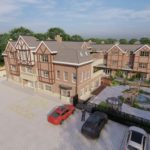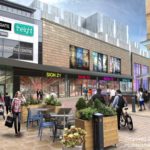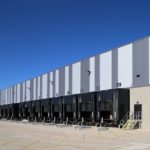Features - Business
Build back better – learning from lockdown

As we start to unlock and the shift of focus starts to turn to the economy, Sarah Baillie, Planning and Infrastructure Consenting Partner, at Addleshaw Goddard LLP, discusses what lessons we can learn from lockdown if we want to transition towards a greener, net zero and sustainable economy.
As we begin to try and plan for recovery, it is clear we face monumental challenges ahead but they will be far worse unless we design our recovery to address them.
During lockdown, we’ve had time to consider how we live, work and play as well as our social, physical and mental wellbeing – of ourselves and each other. With movement restricted during the crisis, it heightened the recognition, value and reliance we place on connectivity but also locality, place and the environment.
As traffic decreased, we also moved more by walking and cycling. North of the border, Transport Scotland funding and delivery from Sustrans Scotland, effectively led to overnight pop-up cycle lanes, and local authorities led initiatives of reduced car parking and the closure of normally traffic-polluted roads. Pavement and on-street parking space will become of intrinsic value to pedestrians, the restaurant and pub sector as we begin to unlock. Many of these sustainable travel measures have been facilitated by active travel and social distancing requirements as a result of the pandemic – not net zero ambitions. However, it is clear that continued investment in them will not only help recovery in the shorter-term but reduce emissions in the longer-term.
Aligned to this, the crisis has amplified the calls for investment in sustainable, technologically advanced and adaptable infrastructure. As we have travelled less and been forced to adapt and connect in different ways for home working and learning, it has highlighted that significant rollout and investment needs to be prioritised for projects that also support net zero, such as digital technology, low carbon, transport and energy infrastructure. This will unlock high quality jobs and boost economic activity, especially in rural and hardest hit areas. Connectivity amongst people, business and places now matters more than ever in order to lay the groundwork for resilience and recovery.
We’ve also witnessed streets and parks colonised by people exercising and clapping hands, buildings illuminated and pavements used as canvases, and latterly, gatherings of friends and family in parks. This has simply enhanced and revitalised the importance of creating vibrant, clean, high quality, innovatively designed green and public spaces that prioritise people and their wellbeing – as well as unifying and connecting communities.
The pandemic has been horrifically brutal – on a personal, professional and global scale, and tested our ability to collaborate. It has painfully demonstrated just how interconnected our social, economic and environmental challenges are – our human activity is strongly related to climate change, we aren’t equally resilient across society, and we need economic activity to survive. Essentially, it has brought the three pillars of sustainability into sharper public focus. The pandemic simply highlights that connectivity is the lifeblood of any socio-economic system, influencing quality of life, the shape of urban fabric and determining the type of economic activity it supports.
Our new normal will not resemble a pre-COVID world – but why return to it? It is imperative that lessons we have learnt are used to create positive momentum to help create and build back better sustainable places if we want to recover and unlock real economic investment and growth in Scotland. Many of us who operate across the development sector have long recognised the value of place-based interventions in contributing to inclusive economic growth, promoting quality sustainable places, and enabling the transition to net zero.
As leaders commit to unprecedented funds to recovery packages, choices now will shape our economies, environment and societies for decades. It was encouraging to see that on 1 June more than 200 leading UK business CEOs called on the UK government to deliver a recovery plan that puts sustainability at its core and that the recent Report of the Advisory Group on Economic Recovery to the Scottish Government insisted that a green recovery needs to be at the spine of post COVID economic recovery.
Those developing across the real estate, transport and energy sectors, now have a huge opportunity to lockstep and lead the reset in reshaping the world we live in a more sustainable way. Placemaking has the power to create connectivity at a social, emotional and physical level – but for it to be great, we must build back better. Our new normal must be “more sustainable”, and have a better understanding of evolving community needs, long term investment effort, and willingness to adapt. Just as we have done in the crisis, we need to collaborate with government, be brave, bold, inspirational, and innovative. Only then, will we create places in which we want to invest time and money and the recovery that will deliver the transition towards a greener, net zero and sustainable economy.
If you would like to read more like this, then please click here
Related Articles
More Features
- SMEs remain unprepared as cyber threats escalate
19 Apr 24
SMEs neglect cyber security, making them easy targets for a wide range of attacks, including
- UK construction costs set to rise by up to 3.8% in 2024
29 Feb 24
Construction costs in the UK are predicted to rise by 3 – 3.8% this year,
- A year of procurement, politics and productivity
24 Jan 24
With 2024 shaping up to have a great deal of changes through political, economic and






